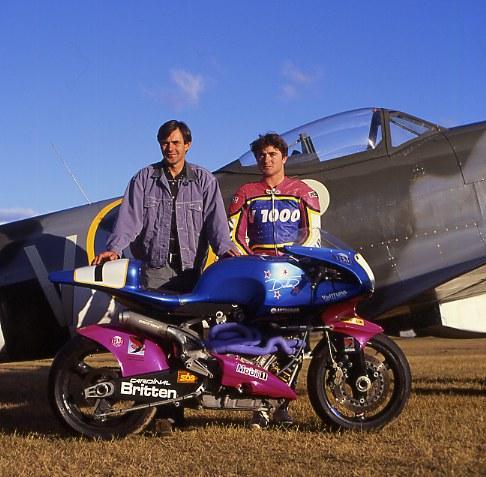
First published 25 February 2017
ASK anyone remotely interested in motorcycles if they’ve ever heard of Burt Munro, and they’ll say: “Of course. He was the New Zealand guy in The World’s Fastest Indian. That movie with Anthony Hopkins.”
Munro certainly was a fascinating and brilliant motorcycle engineer. In case you missed it (?), Munro spent a fair slice of his life modifying an ancient Indian Scout, taking it to the famous Bonneville Flats in the USA multiple times and setting three world records along the way: first in 1962, again in 1966 and finally in 1967.
My faithful research team* tells me that Munro’s 1967 achievement — an under-1000cc class record of 295.453 km/h (183.59 mph) — still stands. On a 1920 Scout, if you don’t mind, at the ripe old age of 68. His fastest one-way run was 305.89 km/h (190.07 mph), the fastest-ever officially-recorded speed on an Indian.
For me, the most interesting part of the Burt Munro tale is not that he went so fast, but that he did it with a bike that was substantially hand-made. He modified it, built parts for it, and built tools for it, in his modest garage. The inference, of course, is that if you and I had the brain cells, we could do it too. That’s the ‘wow’ factor of the story.
But I swear I will go to my grave failing to understand why the Kiwi movie industry chose to make a movie about Burt Munro, when they could have made a movie about John Britten.
I suspect Munro’s 1962 world record was one of the sparks that gave birth to Britten’s fascination for motorcycles in general and fast motorcycles in particular. A tiny bit of research will tell you his first substantial motorbike project was rescuing and restoring an old motorbike that he and a friend found in a ditch. The bike? An Indian Scout, just like Burt’s. The year? 1963, a year after Burt set his first world record. Little Johnny was 13 years old, and bringing the old Indian back to life turned out to be the start of something big.
Real big.
Fast-forward 29 years. We’re at Daytona International Raceway, Florida, USA, for the 1992 Battle Of The Twins. It’s a big deal, the BOTT. Everyone takes it seriously. Ducati. Honda. Harley Davidson. Moto Guzzi. Anyone who builds a bike with two pistons and a reasonably serious fistful of horsepower wants to win at Daytona.
Amid all the factory mechanics and professional race teams there’s a curious bunch of New Zealanders with funny accents and a weird looking pink and blue bike like nothing anyone has ever seen. Little 13-year-old Johnny has turned into brilliant 42-year-old Johnny, and the whacky bike in the pits is his creation. “Uh bult uht uhn muh shud,” brilliant kiwi Johnny undoubtedly said to passers-by.
And what did they see? Give or take a coat or two of Turtle Wax and maybe some Photoshop highlights, they saw this:
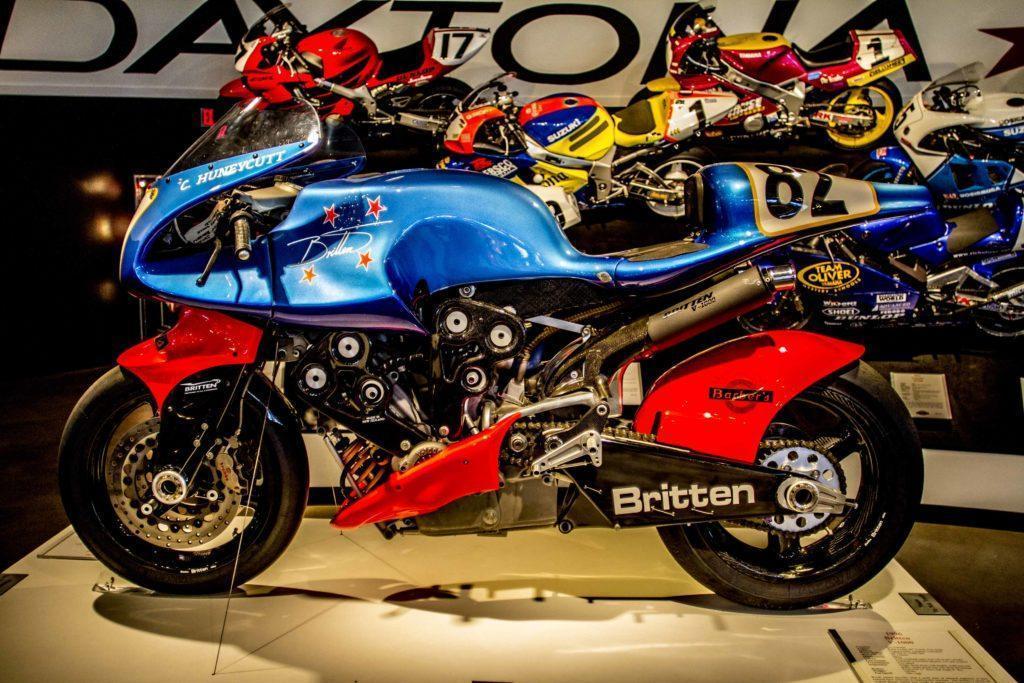
It’s not a factory-built bike that’s been modified. No sir-ee. It’s built from scratch. Six thousand hand-made parts, sketched by little Johnny on a sketch pad with a 2B lead pencil and then crafted by him and a few mates with a few cartons of Steinlager (yes, I thought it was German too. Nope, it’s Kiwi). Check out the exhaust. It took 60 hours to manufacture.
And the bodywork — designed using Formula One principles of carefully aimed airflow to hold the bike on the track. The air passes through the middle of the bike and then downwards, creating useful road-holding force. A radiator sits under the seat, facing upwards. (To be honest, I’m not sure if the downward force theory worked all that well. There are a few videos around the place and the bike seems to spend a fair bit of time on its back wheel, even when racing.)
That Ohlins shock absorber up front is the rear suspension, connected via levers and rods and fairy dust to the back wheel. Up front, the rake and trail are adjustable with your trusty allen key.
The engine is a V-twin, in 60-degree Harley-style configuration (rather than L-shape ala Ducati or BMW-on-viagara like a Moto Guzzi). The hand-made eight-valve quad-cam fuel-injected motor revs to 12,000rpm, making 166 horsepower and 303kmh (188mph) along the way. It has a programmable engine computer (just plug it into your laptop). The valves and conrods are titanium. Hand-made, remember. In his shed. In 1992.
There’s no chassis to speak of. The hand-made carbon fibre/kevlar rear end is bolted to the back of the motor. The hand-made carbon fibre/kevlar upper spine is bolted to the top of the motor.
The bike’s aerodynamic bodywork was crafted by Johnny using wire and a glue gun, then wrapped in carbon fibre. The whole thing weighs 138kg (that’s 80kg lighter than my similar-era 1000cc V-twin 1988 Guzzi LeMans, and 24kg lighter than 2016 Ducati Panigale R) thanks to liberal use of carbon fibre and a clever design philosophy that wherever possible, every part should do two jobs.
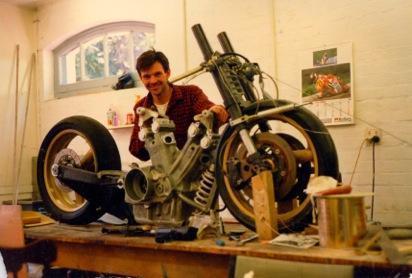
So it turned a few heads in the pits.
If you don’t already know the story, you are probably expecting me to tell you that the Britten V1000 rolled out onto the track that day in August 1992 and won the race.
Well, no. It didn’t.
But it did roll out onto the track and scare the bejeezus out of everyone. There’s some great footage from the race where the v1000 is behind another bike — a Ducati, I think — going down a moderate-length straight. As you watch, you see the two bikes under full acceleration and the Britten closes the gap at an astonishing rate. It was quite obviously much faster.
And yep, it overtook that Ducati (and everything else in its path) and took the lead. Genius Johnny, watching from the pits, almost wets himself with excitement. Understandably. Hand-made, remember. In his shed. Can you imagine the conversations among the mechanics and support teams from the major manufacturers? Er, what the heck ..?
And then it broke down. DNF’d while leading the pack. Let down, not by one of Johnny-and-the-lads’ hand-made-with-help-from-Steinlager components, but by a shop-bought rectifier. “Ah gush! Duh uh hufftuh buld UVURYthung?” Johnny undoubtedly said to his crew.
Yes, John and his whacky bike did return to Daytona in subsequent years. And yes, they did win. In fact, in the early 1990s, John and his people achieved something akin to motorcycle DIY world domination.
Check this lot:
1992
1st Battle of the Twins, Assen, Holland
2nd Pro Twins, Laguna Seca Raceway, USA
DNF Battle of the Twins, Daytona, USA (that’s the race I just told you about)
1993
Fastest Top Speed at the Isle of Man TT
1st (BEARS) and 2nd (Formula 1) Australian TT Bathurst
3rd Battle of the Twins, Assen, Holland
NZ Grand Prix title
World flying mile record (1000 cc and under) 188.092 mph
World standing start 1⁄4-mile (400 m) record (1000 cc and under) 134.617 mph
World standing start mile record (1000 cc and under) 213.512 mph
World standing start kilometre record (1000 cc and under) 186.245 mph
1994
1st Battle of the Twins, Daytona, USA
1st and 2nd New Zealand National Superbike Championship
Not bad, eh? Hand built. In his shed.
Johnny was more than just a rev head genius, too. After training as an engineer he went into business as a fine artist, designing and making glass lighting (just like Sweet Home Alabama, I guess). He converted a stable into a spectacular house and garage, casting the door handles himself because he couldn’t find any he liked. He made money in property development.
*Google and Wikipedia

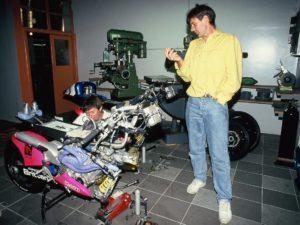

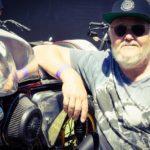
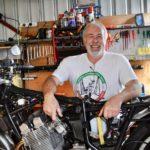
Just saw three of these, but in museums. Two are in a world-class museum in Invercargill. The other in the Wellington museum. So unique in design!
What a legend of a Motor Cycle and the man himself that built it from the ground up.
I was in love with the Britten back in it’s hey day and still love the Britten today.
I even have one of the peuter models sitting in its box never built which I have owned for many years now.
Long live the Britten
Fantastically cool; loved this bike.🏍🏍🏍
Imagine what he could’ve done if he wasn’t taken, way too early.
Yup great authoritative read. Seen the film about the fastest Indian and a great sequel would be a film about the Brttten. What a fabulous bike and how it was made is the thing of storybooks. Must take a look at YouTube as it must be fantastic.
Great write up Peter, the Britten makes me proud to be a kiwi!
Great story Pete. Straight outta Nu Zuland huh?